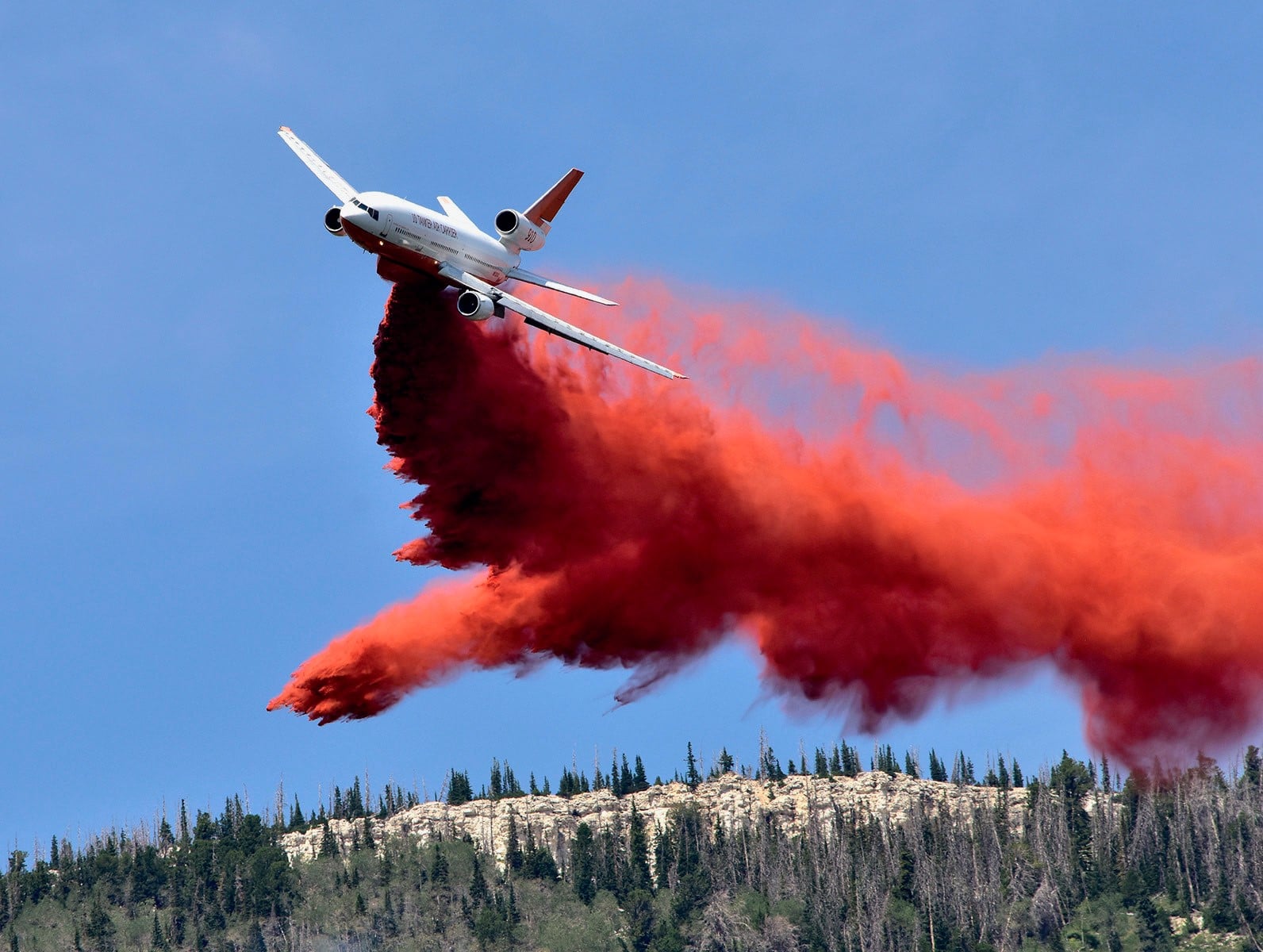Some information may be outdated.
In a year already full of calamity, the Utah wildfire season has broken records for the most human-caused fires and fire-related expenses in Utah history. Drought, restrictions related to COVID-19 and a weak monsoon season have all conspired to create conditions for a tough fire season that just won’t end.
“We are above average. We’re only in September, and we have weeks to go in the fire season,” State Forester Brian Cottam said to the Utah Executive Appropriations Committee.
Cottam presented the current fire statistics to the committee in the Utah House of Representatives on Sept. 15 to ask for an additional $28 million for fire suppression, in addition to the already $36 million spent so far. The state’s typical fire suppression budget is around $12 million. The state has to front the money for all the fires that start on state or private land, even if those fires spill onto federally managed land. Later, the state receives some reimbursement due to cost-sharing agreements with federal agencies.
Not only is 2020 projected to be the costliest fire season, but there are more human-caused fires this year than ever before.
In 2018, previously the record-setting year for most wildfires in Utah, only 614 of the 1,285 fires were human-caused. This year there have already been 963 human-caused fires out of a total of 1,275 wildfires, and there are bound to be more.
Cottam explained that a typical year has a roughly even ratio between human-caused and lightning-caused fires in Utah. This year, around 75% of the fires have been of manmade origin.
“All human-caused fires are preventable. None of them need to happen,” said Cottam, explaining why this is an alarming metric for this fire season.
SUB: CHANGING WEATHER
“Ironically, just as COVID’s first wave got wildly rampant, our storm train shifted further northward, and we were receiving below normal precipitation for much of April and May,” said Basil Newmerzhycky, the Predictive Services Fire Weather Program Manager at Bureau of Land Management.
Newmerzhycky said that Utah was already below average levels of precipitation in June.
“That is already one ingredient to have in the above-normal fire season, from a climactic point of view,” he said. “The second reason is basically a lack of monsoons.”
According to a 2017 study published in the scientific journal Nature, monsoons are changing due to climate change, so drier late summers and longer fire seasons could become our new normal.
In the study, titled “Weakening of the North American Monsoon with Global Warming,” climate models suggest “…a robust reduction in monsoonal precipitation over the southwestern United States.” Dry seasons can cause a build up of duff and dry brush prone to fire starts.
“These results suggest improved adaptation measures, particularly water resource planning, will be required to cope with projected reductions in monsoon rainfall in the American Southwest,” wrote authors led by Stanford University research scientist Salvatore Pascale.
Newmerzhycky declined to comment on whether or not he thought Utah’s fire season severity was specifically due to climate change. He did note that the weak monsoons in the past three to five years correlate with a rapid rise in global temperatures.
SUB: CHANGING BEHAVIOR
Although southern Utah has had less precipitation this year, it’s also had fewer fires caused by lightning during storms. However, with the COVID-19 pandemic, more people have moved outdoors.
“Although COVID-19 doesn’t start fires, it has encouraged folks to get outdoors,” Cottam said to the Executive Appropriations Committee.
According to the Utah State Parks visitation data, this is largely true. Nearly 472,000 more people went to state parks in June this year than in 2019, and over 413,000 people in May.
“We know that there are a lot more people out and about recreating in the outdoors than is typical,” said Jason Curry, the Public Information Officer for the Utah Division of Forestry, Fire, and State Lands. “Obviously, with more people out doing things, the odds of having a fire are going to increase.”
The current pandemic hasn’t just increased the number of wildfires, it’s also increased the cost of each individual fire.
To decrease the chances of spreading COVID-19, all agencies have focused on avoiding large fire camps, increasing funds to suppress fires early and using aircraft more frequently.
This year, the state has also spent more on fire prevention than in years past, including signage and educational programs.
“This year is the first year that the state of Utah has had a full-on prevention program. We partner with the Forest Service and with the BLM to carry that out,” said Curry. “ I would hate to see what things would look like this season if we hadn’t put all of this time, effort, and money into fire prevention, I’m sure that it’s had an impact.”
Part of the program is a new online tool called the “Wildfire Risk Assessment Portal,” which anyone can use to see how threatened their home is. The interactive map shows different layers corresponding to how likely a fire near their home might be, or how high the risk of a fire affecting them is.
“Hopefully, we will see this year as an anomaly in terms of the human-caused fires,” said Curry. “We’re still in record territory for the number of starts, and that’s a huge concern. But overall, we’re hoping for an improvement next year.”
“We’re only in September, and we have weeks to go in the fire season.”
– Brian Cottam
Human-caused fires higher than average
Appreciate the coverage? Help keep local news alive.
Chip in to support the Moab Sun News.





